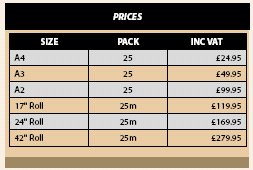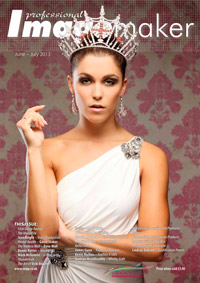articles/Paper/titaniumlustre-page2
Paper Chase PermaJet Titanium Lustre - part 2 of 1 2 3
by Mike McNamee Published 01/06/2013

All this discussion puts a slightly bad light on this media which is not true in practical print viewing terms despite the stats. It's a good, attractive paper, you just need to understand what is going on - the test as always is to make prints and we can assure you that you are going to love them!
The other parts of the testing were up to standard. The Granger Chart was smooth other than a slight imperfection in the mid-range greens. The metamerism was very low at 1.62 CII. The Dmax was 2.13. The shadows differentiated down to 20RGB points, the highlights up to 251 points.
The only other comment is that the lustre surface is reasonably robust to marking. A finger nail will create a scratch but it is not as sensitive as the high gloss materials where even paper to paper contact leaving the printer can be an issue. Wedding photographers have always liked metallic finishes for their albums and so Titanium should find favour there also. Monochrome

As part of the tests we measured the monochrome performance. The media lived up to its billing with a very attractive monochrome off the Epson ABW driver. We used ABW 'Dark' which created a mid-tone grey at 46.4%, so a setting of Normal would be colourmetrically perfect. The grey ramp extended deeper into the blacks with a Dmax of 2.57 (very high). The ramp is plotted on the 'all-colour' curve and shows identical characteristics in all but the shadow tail. We have superimposed the ramp data for Ilford Smooth Pearl as an example of a 'conventional' surface. These are the blue diamonds in the graph - note how the highlights are above those of the Titanium. Note also that the ABW curve (green triangles) runs deeper than the 'all-colour' version of the Titanium print.
Please Note:
There is more than one page for this Article.
You are currently on page 2
- Paper Chase PermaJet Titanium Lustre page 1
- Paper Chase PermaJet Titanium Lustre page 2
- Paper Chase PermaJet Titanium Lustre page 3
1st Published 01/06/2013
last update 09/12/2022 14:59:56
More Paper Articles
There are 0 days to get ready for The Society of Photographers Convention and Trade Show at The Novotel London West, Hammersmith ...
which starts on Wednesday 15th January 2025





